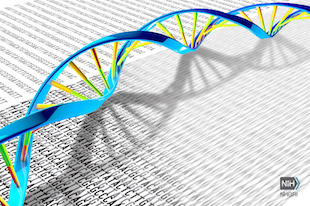Abstract
Although antisense transcription is a widespread event in the mammalian genome, double-stranded RNA (dsRNA) formation between sense and antisense transcripts is very rare and mechanisms that control dsRNA remain unknown. By characterizing the FGF-2 regulated transcriptome in normal and cancer cells, we identified sense and antisense transcripts IER3 and IER3-AS1 that play a critical role in FGF-2 controlled oncogenic pathways. We show that IER3 and IER3-AS1 regulate each other’s transcription through HnRNPK-mediated post-transcriptional regulation. HnRNPK controls the mRNA stability and colocalization of IER3 and IER3-AS1. HnRNPK interaction with IER3 and IER3-AS1 determines their oncogenic functions by maintaining them in a single-stranded form. hnRNPK depletion neutralizes their oncogenic functions through promoting dsRNA formation and cytoplasmic accumulation. Intriguingly, hnRNPK loss-of-function and gain-of-function experiments reveal its role in maintaining global single- and double-stranded RNA. Thus, our data unveil the critical role of HnRNPK in maintaining single-stranded RNAs and their physiological functions by blocking RNA-RNA interactions.
Introduction
Antisense long noncoding RNAs (lncRNAs), which often overlap with the transcripts encoded from the sense strand, constitute the largest sub-class of lncRNAs1,2. They have been shown to regulate the expression of overlapping sense transcripts positively or negatively. Diverse antisense lncRNA-regulated transcriptional and post-transcriptional-based mechanisms have been proposed in the regulation of overlapping protein coding genes, some of which include mRNA stability, alternative splicing, and chromatin level regulation3. In a few instances, protein coding RNAs have also been implicated in the regulation of antisense lncRNAs4. In these contexts, however, the molecular mechanisms that control expression interdependence between an antisense lncRNA and its sense protein-coding partner remain unknown. Another interesting aspect is that many antisense transcripts show significant overlap with their sense counterparts2, but there has not been much data showing RNA–RNA interaction between the overlapping transcripts. This raises the interesting question whether there are any unique mechanisms that maintain single stranded forms of the sense and antisense transcripts to prevent RNA–RNA interactions or double-stranded RNA (dsRNA) formation between them to maintain transcript-specific functions? Thus, there are several outstanding questions that remain unanswered regarding the genome-wide regulation of the expression and functions of overlapping transcripts.
The FGF/FGFR signalling cascade comprises fibroblast growth factors (FGF −1 to −23) and their highly conserved transmembrane tyrosine kinase receptors (FGFR −1 to −4), which control a wide range of developmental signalling pathways with implications in cell specification during early embryonic development to organogenesis in adult organisms5. Over the last few years, substantial evidence has accumulated that supports aberrant FGF signalling as an underlying factor in the pathogenesis of multiple cancer types by promoting cell survival and cell proliferation via supporting angiogenesis6,7.
FGF-2 is a prototypical example of the FGF family and its elevated levels in blood plasma have been reported in multiple cancer types8,9. Several studies have shown that FGF-2 is a key tumour-promoting factor, and it promotes tumour progression through downstream pro-survival signalling pathways such as, RAS-MAPK, PI3K-AKT, PLCγ, and signal transducer and activator of transcription (STAT)10. Consistent with its pro-survival functions, as well as its ability to induce stem cell proliferation, aberrant activation of FGF-2 signalling is associated with enhanced chemotherapy resistance11. Currently multiple FGFR inhibitors are being used as monotherapy or as part of combination therapies to treat therapy-resistant cancers12. As these inhibitors affect multiple tyrosine receptor kinases, including all FGFR receptors (1–4), it is very important to specifically target the FGF-2/FGFR pathway by understanding its downstream regulated gene circuits to minimize the side-effects of FGFR inhibitors. The functional link between FGF-2 signalling and its downstream target genes, including lncRNAs, is largely unexplored in normal and cancer cells. Thus, identifying the FGF-2 regulated gene networks in these contexts will help in devising FGF-2-based therapeutic approaches for cancer.
In this investigation, we characterize the FGF-2 regulated transcriptome in immortalized human embryonic kidney cells HEK293 and cancer cell lines such as HeLa and BT-549 and identify common and uniquely enriched FGF-2 regulated biological pathways in normal and cancer cells. By using FGF-2 induced sense and antisense transcripts IER3 and IER3-AS1 as a model system we investigate how their spatial localization, as well as RNA duplex formation between them, contribute to IER3 and IER3-AS1 oncogenic functions. Of note, we investigate the role of hnRNPK in these unique biological mechanisms.







